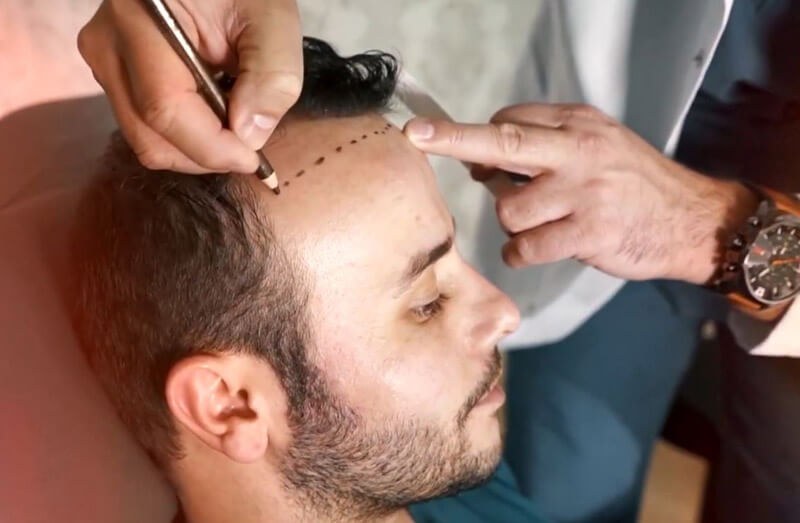There are many different types of hair restoration procedures, including hair plugs, graft implants, and the adverse flap or freeform flap procedure. Patients with hair loss often try these methods after other preventative treatments, such as topical, over-the-counter and prescription medications, vitamins, hair extensions, scalp pigmentation, or laser hair resurfacing. It will be an effective procedure for many people FUE hair transplant.
Hair transplants procedures involve removing hair follicles in small units and placing them in the desired areas. It is a much better option for artificial hair treatments as the hair will often continue to grow after the treatment is complete. The hair can then be cut, combed, colored and processed as normal after recovery. Since the fifties of the last century, this procedure was invented in the United States, and today it is quite common. It is also a favorite procedure of many famous celebrities.
Hair transplants the first step in the process is harvesting hair from the donor area to be used in areas that are thinning or bald. The donor area is located on the patient's own head and usually includes the hair at the back of the scalp. This horseshoe-shaped area of hair, also known as the occipital scalp, usually persists throughout life despite most baldness. These hairs are usually chosen for their strength and durability and are more or less permanent. This hair is naturally resistant to DHT, a testosterone derivative that causes hair loss, reducing the likelihood of thinning and baldness. The medical professional will also assess the “donor zone density” or the number of hairs per square centimeter. Higher donor density means more hair can be used to cover more bald areas.
Small follicular units containing one to four individual hair units are usually harvested using one of two methods: either a scalpel or a follicular extraction method. The first method produces hair grafts, but often results in a permanent scar. FUE is often a little more involved, but does not leave a scar. It involves harvesting units of hair follicles and can be done with the help of a highly skilled doctor and medical team or with a robotic medical device. Neograft and Artas are the most commonly used robotic systems. For many people, robotic surgery may be the best hair transplant procedures chance.

On the same day, the collected grafts are inserted into the patient's scalp. Robotics is often preferred in this process as well. Local anesthetics are usually used to relieve pain. Depending on the volume and amount of hair being transplanted, a typical hair transplant procedure will last between four and eight hours. Since hair transplant does not involve a scalpel, the risk of infection is low (about 1 in 1000 cases); however, a specialist may prescribe antibiotics to further reduce this risk.
Patients who wish can return to work in the next day or two (although this can often take a full 7 days depending on how you heal). Patients are advised not to wash their hair for about 10 days. Within two to three weeks, the transplanted hair will fall out. After about three to 12 months, the transplanted follicles will begin to produce new hair (usually about 60% of new hair appears after six months), and after about one to two years hair transplant will be fully ripe. Usually, only one or two procedures are needed to achieve the desired result. After that, no further treatment is needed, including topical medications and creams.
Note that not everyone with hair loss is a candidate for this procedure. If the candidate is looking for preventive treatment, this may not be the best option. Hair transplants the procedure should only be considered if the patient is healthy, as there is a small risk of infection. Those with diabetes, heart problems, and other serious health problems will want to discuss these issues with a medical professional. If the patient is not yet showing signs of male pattern baldness, more preventive measures can be taken before surgery.
Individuals with diffuse hair loss, including some women with hair loss, should not consider this treatment because hair loss in this case, do not conform to conventional patterns and may also reduce important donor areas. We do not recommend this treatment for those with temporary hair loss due to stress, medication, diet or childbirth, as these cases can also be treated by eliminating such factors over time. A suitable candidate for this type of procedure requires fairly thick hair on the back of the head. If you're considering this procedure, be sure to have an open discussion with your doctor about whether it's right for you.
